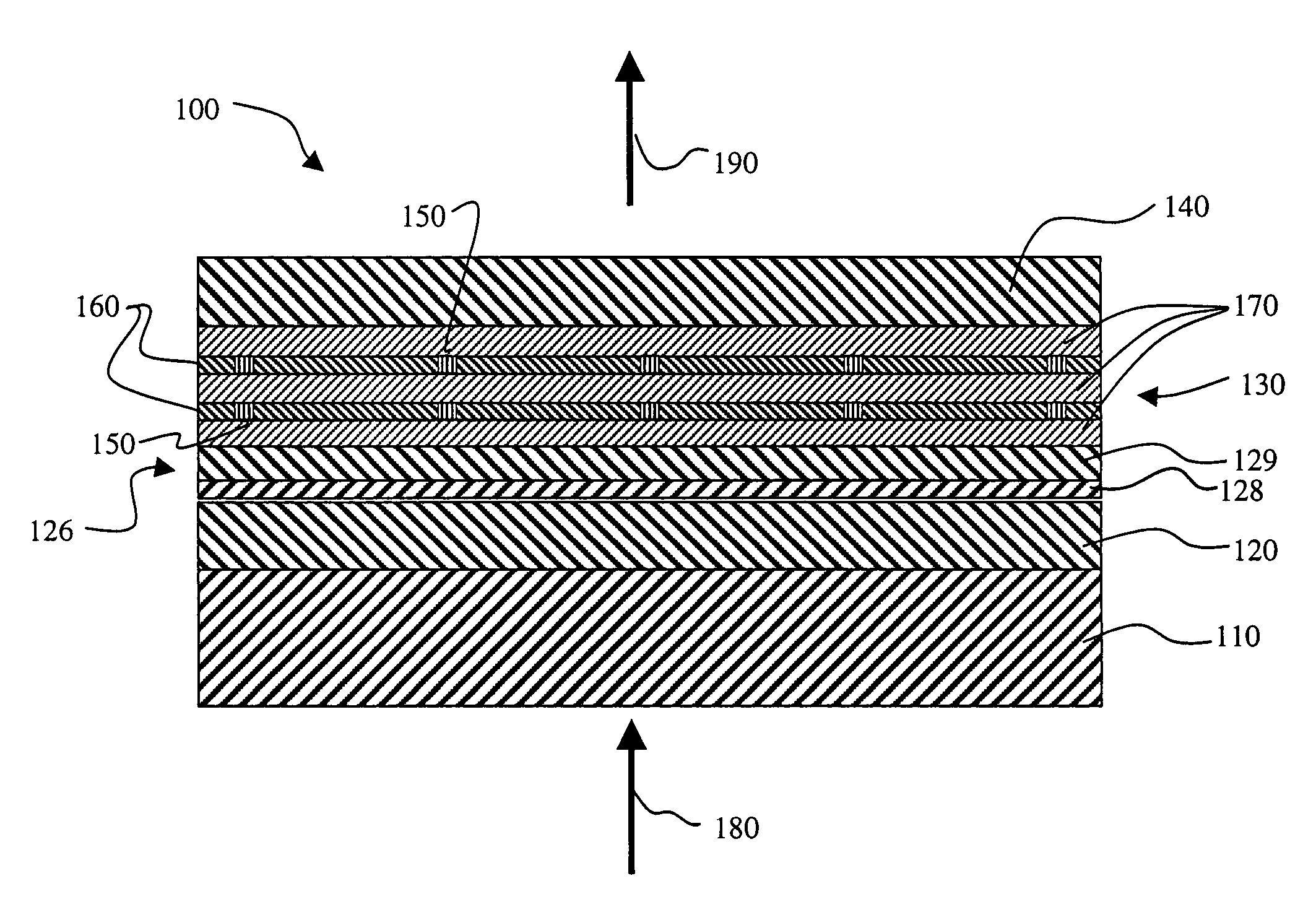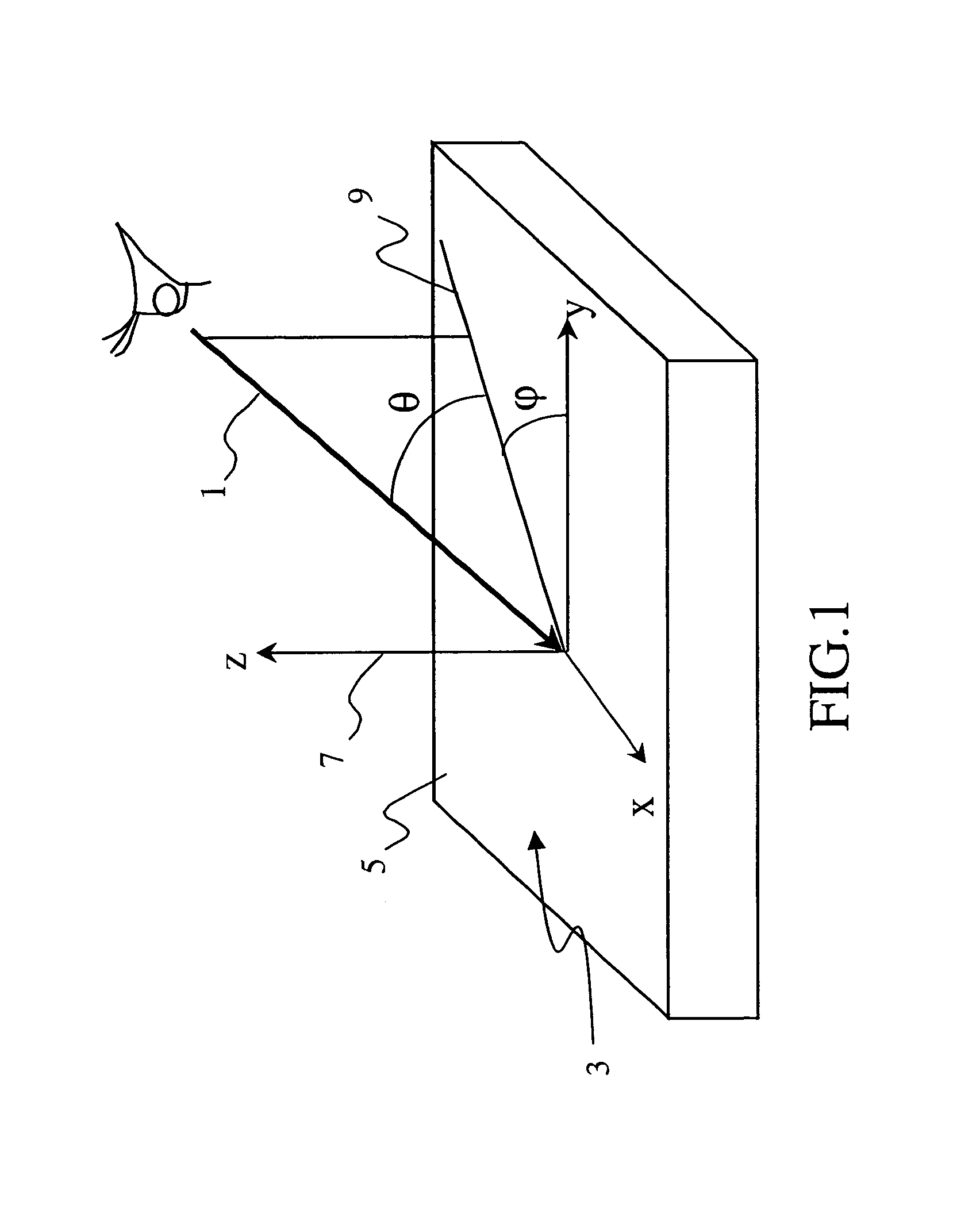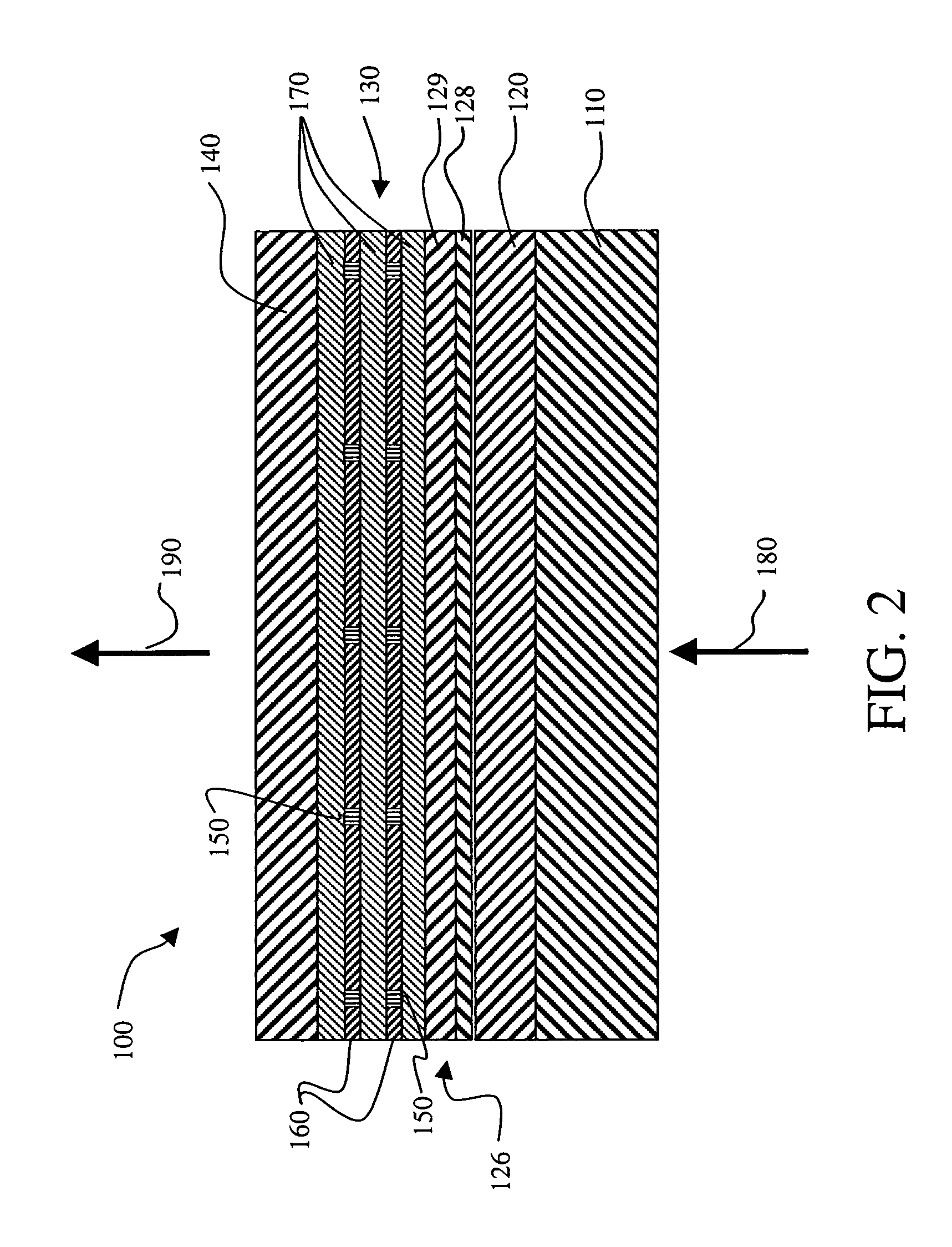Vertical cavity laser producing different color light
a vertical cavity laser and color light technology, applied in semiconductor lasers, active medium materials, instruments, etc., can solve the problems of loss of contrast ratio, and loss of overall display efficiency, so as to achieve the effect of increasing light leakage, not decreasing contrast ratio, and loss of contrast ratio
- Summary
- Abstract
- Description
- Claims
- Application Information
AI Technical Summary
Benefits of technology
Problems solved by technology
Method used
Image
Examples
Embodiment Construction
[0037]The invention is enabled by a large planar light source that produces blue light which is nearly collimated and single wavelength. A light source that meets these criteria is a two-dimensional vertical cavity surface emitting laser (VCSEL) array device 100, as shown schematically in FIG. 2. FIG. 3 shows a top view of the two-dimensional VCSEL array device 100 where on the surface of the VCSEL needs to be defined blue emitting elements 205 which are composed of thousands of micron-sized laser pixels 200 separated by interpixel regions 210. In order to obtain large area blue laser light emission, it is preferred that an active region 130 be composed of organic-based gain media. However, recent research, R. N. Bhargava, Phys. Stat. Sol. 229, 897 (2002), points to the possibility of obtaining visible wavelength emission from inorganic-based nanoparticles. Examples of these are ZnO nanoparticles (with preferred diameters less than 10 nm) either undoped or doped with impurities, suc...
PUM
| Property | Measurement | Unit |
|---|---|---|
| size | aaaaa | aaaaa |
| tilt angle | aaaaa | aaaaa |
| tilt angle | aaaaa | aaaaa |
Abstract
Description
Claims
Application Information
 Login to View More
Login to View More - R&D
- Intellectual Property
- Life Sciences
- Materials
- Tech Scout
- Unparalleled Data Quality
- Higher Quality Content
- 60% Fewer Hallucinations
Browse by: Latest US Patents, China's latest patents, Technical Efficacy Thesaurus, Application Domain, Technology Topic, Popular Technical Reports.
© 2025 PatSnap. All rights reserved.Legal|Privacy policy|Modern Slavery Act Transparency Statement|Sitemap|About US| Contact US: help@patsnap.com



